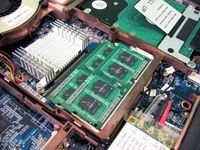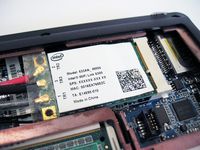SLI & Centrino 2: Gaming Laptops Battle
Eurocom M860TU 15.4” Montebello: Hardware
Processor
Eurocom’s entry interested us for two reasons: to begin, it’s one of two Centrino 2 examples that have landed in our lab. Secondly, it features Intel’s Core 2 Extreme X9100 processor—the fastest mobile CPU (at least in terms of frequency) available.
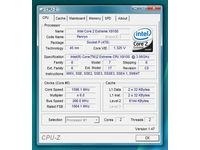
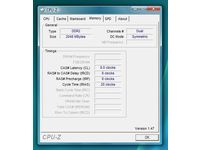
That chip, launched in July 2008, employs a 1,066 MHz front side bus and an 11.5x multiplier to hit a 3.06 GHz clock speed. Its two cores share a 6MB L2 cache, and of course, all of Intel’s power-saving technologies help conserve battery life—a good thing given the CPU’s somewhat-lofty 44 W TDP. Of course, that’s nothing compared to the 95 W imposed by the Q9650 in Killer Notebooks’ Odachi.
Memory
CPU-Z recognized the memory modules installed in Eurocom’s Montebello as DDR2. However, they’re actually DDR3-1333 modules capable of 10.6 GB/s. We’d hoped to see a 4 GB configuration from Eurocom, but our sample instead came with two sticks of 1 GB each.
While we’ve seen plenty of conjecture as to the benefits of DDR3 in desktops, the technology is undoubtedly a boon to notebooks as a result of a reduction to supply voltage (DDR2 runs at 1.8 V, while our DDR3 modules only need 1.5 V). Although the timings on Eurocom’s OCZ DDR3 modules sound high at 9-9-9, bear in mind that the technology uses shorter clock cycles, so the latency would be similar to a DDR2 module running at 667 with CAS 4.5 timings. Even still, ASUS has the leg up here with its Qimonda modules running at 8-8-8.
It goes without saying that we didn’t need to make any tweaks to the Montebello to get its 2 GB cruising under Vista x32.
Get Tom's Hardware's best news and in-depth reviews, straight to your inbox.
Graphics
While Eurocom plans to make its Montebello available with Nvidia’s 9800M GTX, our model came with the 9800M GT—the same GPU found in Alienware’s m17x, only in a single-card setup rather than SLI. The M860TU is a much smaller notebook, so there’s no room for a second board. However, the 15.4” screen maxes out at 1680x1050 anyway. We’d expect that one 9800M GT might be able to deliver playable-enough frame rates.
This is redundant information by now, but just as a reminder, the 9800M GT centers on the same G92M as last-generation’s mobile 8800-series GPUs. It’s manufactured at 65 nm, sports 754 million transistors, and is fed by 512 MB of GDDR3 memory on a 256-bit bus. The GPU clock runs at 500 MHz, the shaders cruise along at 1,250 MHz, and the memory is clocked at 799 MHz.
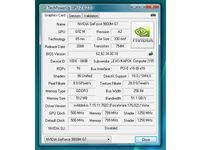
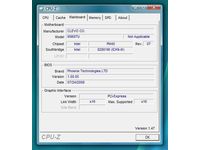
Despite its identical GPUs, memory configurations, and model names, the 176.10 driver package used on Alienware’s m17x would not install here. We instead had to use the vendor-specific 176.02 driver supplied by Eurocom. Alas, that’s just one of the caveats when it comes to non-standard notebook hardware. We’ve come a long way, but hardware is not yet as standardized as desktop components.
Storage
The smaller, lighter M860TU Montebello doesn’t have room for multiple hard drives either. So, Eurocom installs a single Hitachi GST Travelstar 7K320 spinning at 7,200 RPM. In our own tests, we found the 7,200 RPM Travelstar to be an average performer. It’s not a stand-out, but it does complement the other performance components Eurocom chooses to install.
There’s an available slot in the M860TU for a TurboMemory card, but the notebook is fine without it. The Intel feature works well enough in laptops without enough physical RAM, enabling Vista-specific capabilities like ReadyBoost and ReadyDrive. However, given the cost of memory, we’d prefer another 2 GB of DDR3.
Networking
Not only does the Montebello include Gigabit Ethernet, but it also sports Intel’s new WiFi Link 5300—an upgrade from the WiFI Link 4965AGN that preceded it. Like the 4965, the 5300 supports 802.11a/b/g/and draft-n. However, the newer model leverages three antennas to help it push up to 450 Mb/s. That’s up from a theoretical max of 300 Mb/s available on the 4965AGN. As mentioned in our Centrino 2 preview, the WiFi Link 5300 also incorporates some power-saving advancements and support for Active Management Technology 4.0.
Chassis/LCD
Clevo shows itself again, and this time it’s the M860TU chassis powering Eurocom’s Montebello bearing the same model number. The 15.4” chassis is actually available with four different LCD configurations. The lowest-end is a WXGA panel with a maximum resolution of 1280x800. Then there’s a WXGA+ option with a native 1440x900 resolution. Our sample included the third option, a WSXGA+ screen able to handle 1680x1050. But you can also get the same screen in WUXGA trim running at 1920x1200 natively.
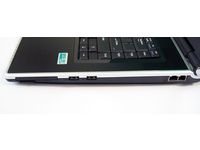
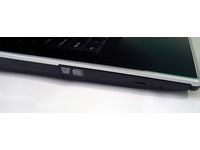
The front of the M860TU hosts a headphone output, digital S/PDIF output, microphone input, and mini FireWire 400 port. There are also a host of LEDs indicating battery status, wireless connectivity, hard drive activity, and the various key locks. The labeling is hard to read though, and the LEDs themselves are fairly dim, making them nearly useless as indicator lights. On the left side of the chassis you’ll find the optical drive—a DVD+/-R/RW dual-layer burner, which we found to open and close with a cheap snapping sensation. Most of the I/O is on the right side of the whitebook. Gigabit Ethernet, a 56k modem jack, two USB 2.0 ports, an ExpressCard bay, and a card reader are all there. Flip the notebook around for access to one more (poorly placed) USB 2.0 port, an equally hard-to-reach eSATA connector, DVI output, and an HDMI port.
Current page: Eurocom M860TU 15.4” Montebello: Hardware
Prev Page Killer Notebooks’ Odachi: Look and Feel Next Page Eurocom M860TU Montebello: Look and Feel-
kitsilencer From a money point of view, it's never going to make sense buying a gaming laptop. Scaled down performance and inability to upgrade are issues.Reply
But it sure as hell feels good having one ^___^ -
neiroatopelcc http://www.tomshardware.com/reviews/gaming-notebook-roundup,2023-6.htmlReply
"shipped the system with a 64-bit copy of Vista Ultimate (Alienware included x32 Home Premium)." -
ap90033 4 Grand? Are you guys nuts? I would say that right there would rule out about 90% of us normal gmaers..Reply
Besides the gaming scores looked weak imo..
I personally thought it was a better idea to go get a Gateway P7811FX with a single Geforce 9800GTS. It plays Call of Duty at 1920x1200 max settings around 50FPS. AND it cost me ONLY $1249 (Plus Best Buy let me pick any game I wanted for FREE!) -
agree with kitsilencer, gaming laptop is never practical.Reply
even with a beast graphics card, you'd be pretty hard to get more than 2 hours of shitty performance.
get a gaming desktop and perhaps an EEE or iPhone for travelling. my iPhone has 20+ games and enough media (don't forget TV connector for watching films in hotels) to keep me busy for more than one week away from my gaming rig. -
ap90033 Not true my "Gmaing Laptop" is great at LAN Parties and I play it for 6-8 Hours straight there...Reply
I think maybe you had a bad experience with a laptop that claimed to be a "gaming" laptop. I bought one before like that and it have an 8600M Geforce and it Sucked bad... If you get a good laptop with say a 9800gts or so you would be suprised... -
GlItCh017 ap900334 Grand? Are you guys nuts? I would say that right there would rule out about 90% of us normal gmaers..99.90%Reply -
ap90033 PS gaming laptops hold value much better than desktops. I had one I paid 1250 for, had it for a year, then sold it for $1100 and bought the newer "upgraded" model that just came out for $1250. I got an Upgraded CPU (From Core 2 1.67 GHZ to Core 2 Centrino 2 2.26 GHZ), Memory (from 3 Gigs DDR2 667MHZ to 4 Gigs DDR3 1066MHZ), Hard Drive (faster), Video Card (from 8800gts to 9800GTS), Screen (from 1440x800 to 1920x1200) and OS (From 32 bit to 64 bit). Not bad upgrade for $150 or so!Reply
